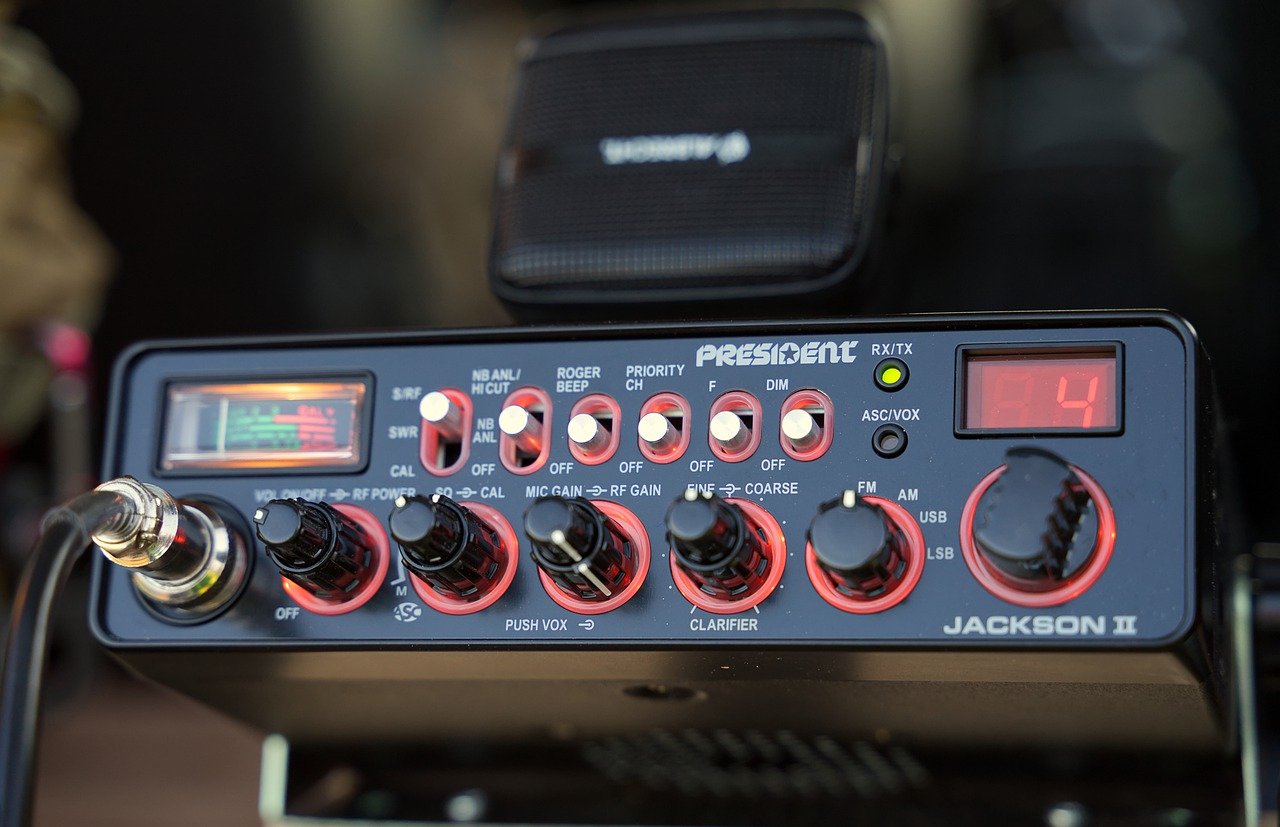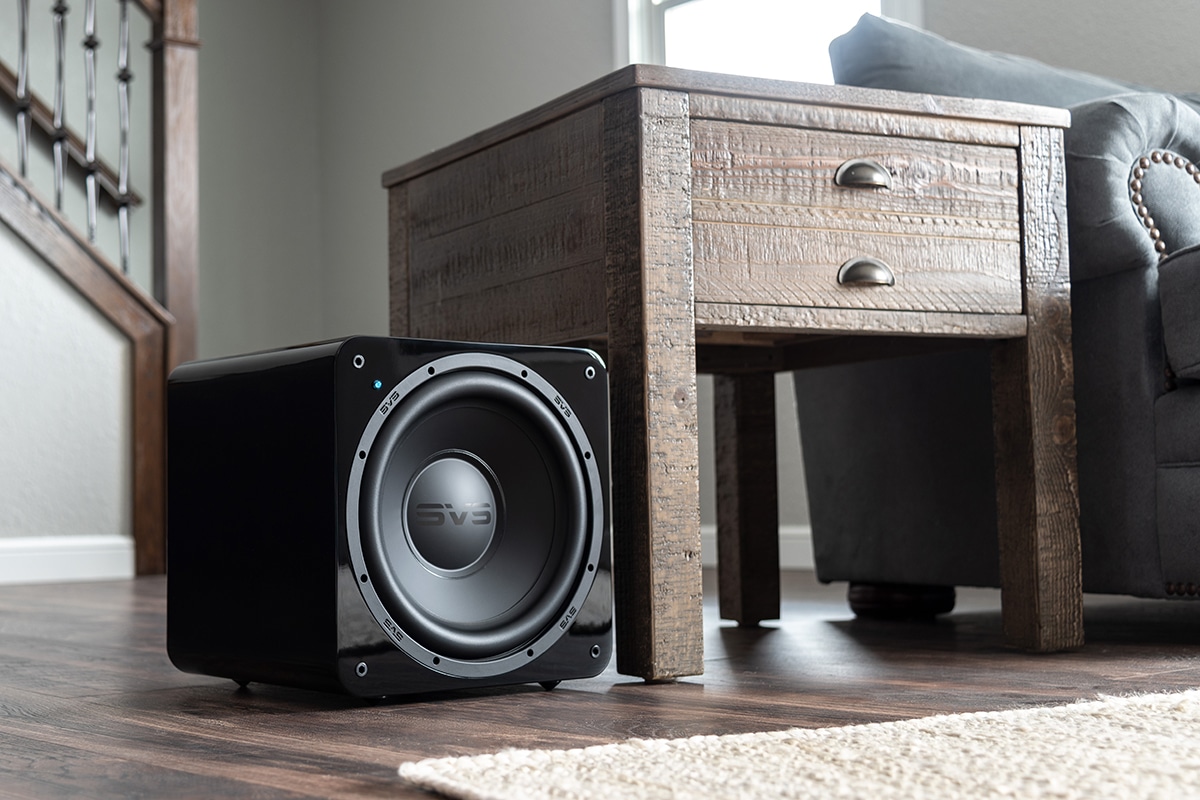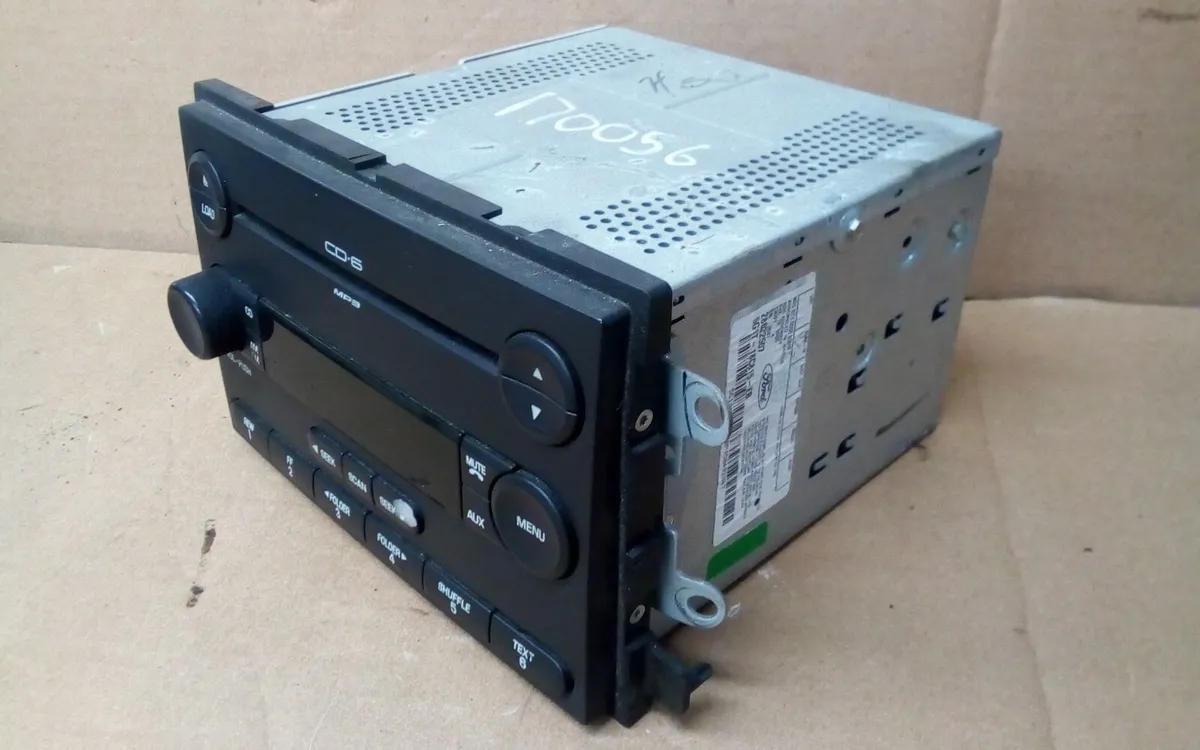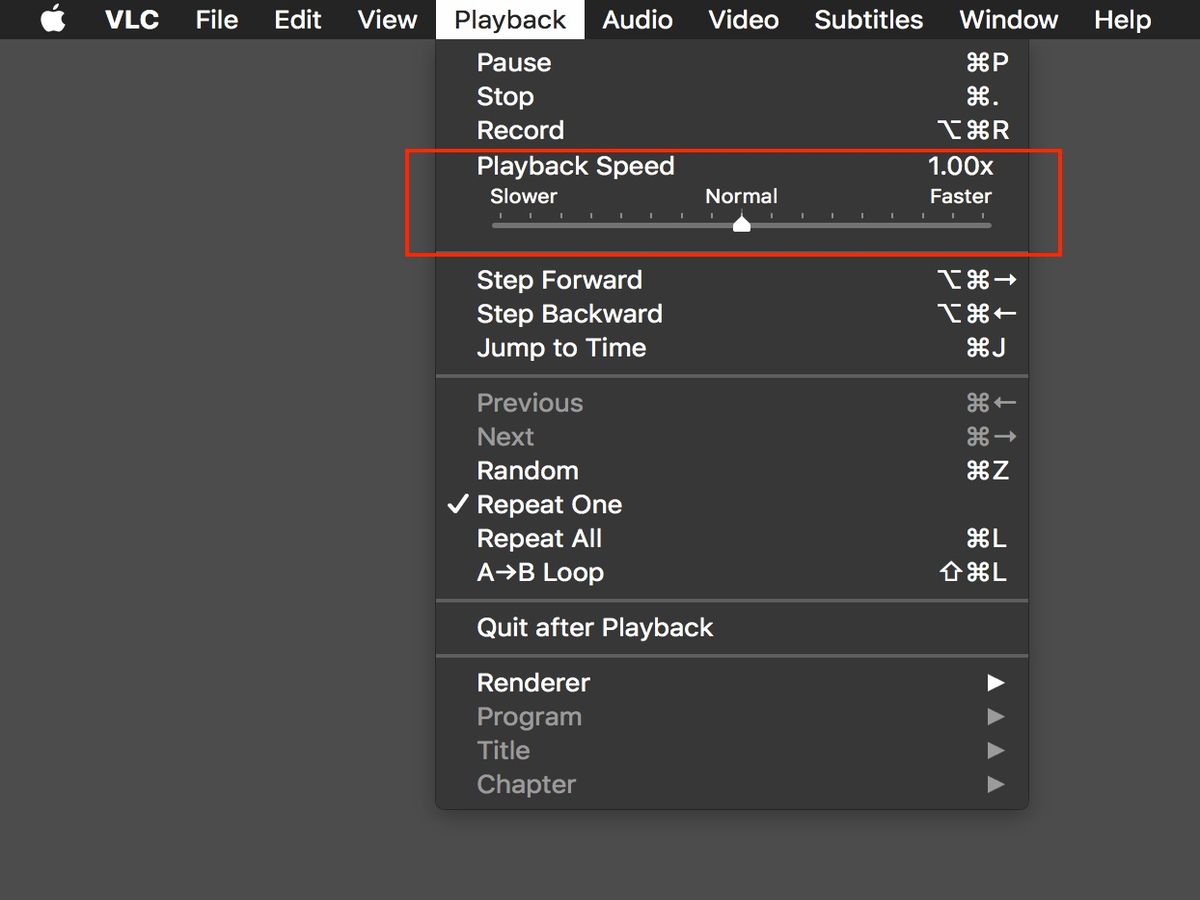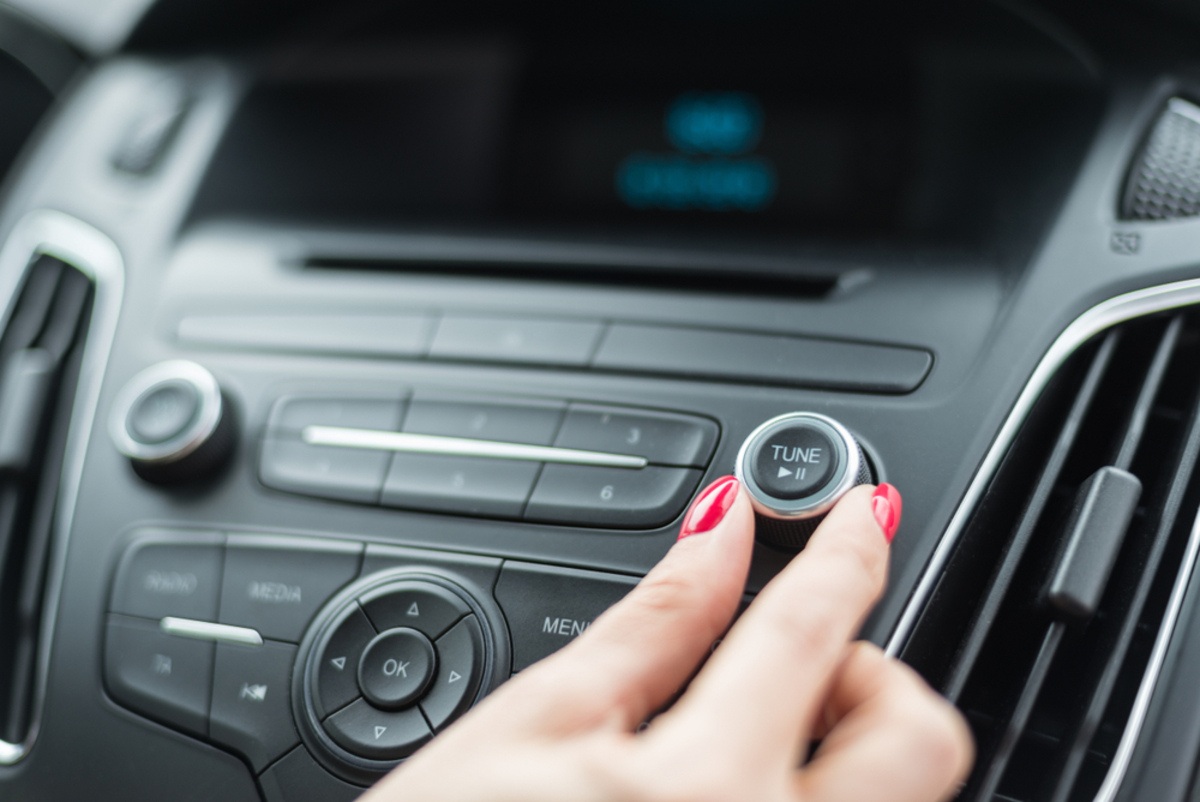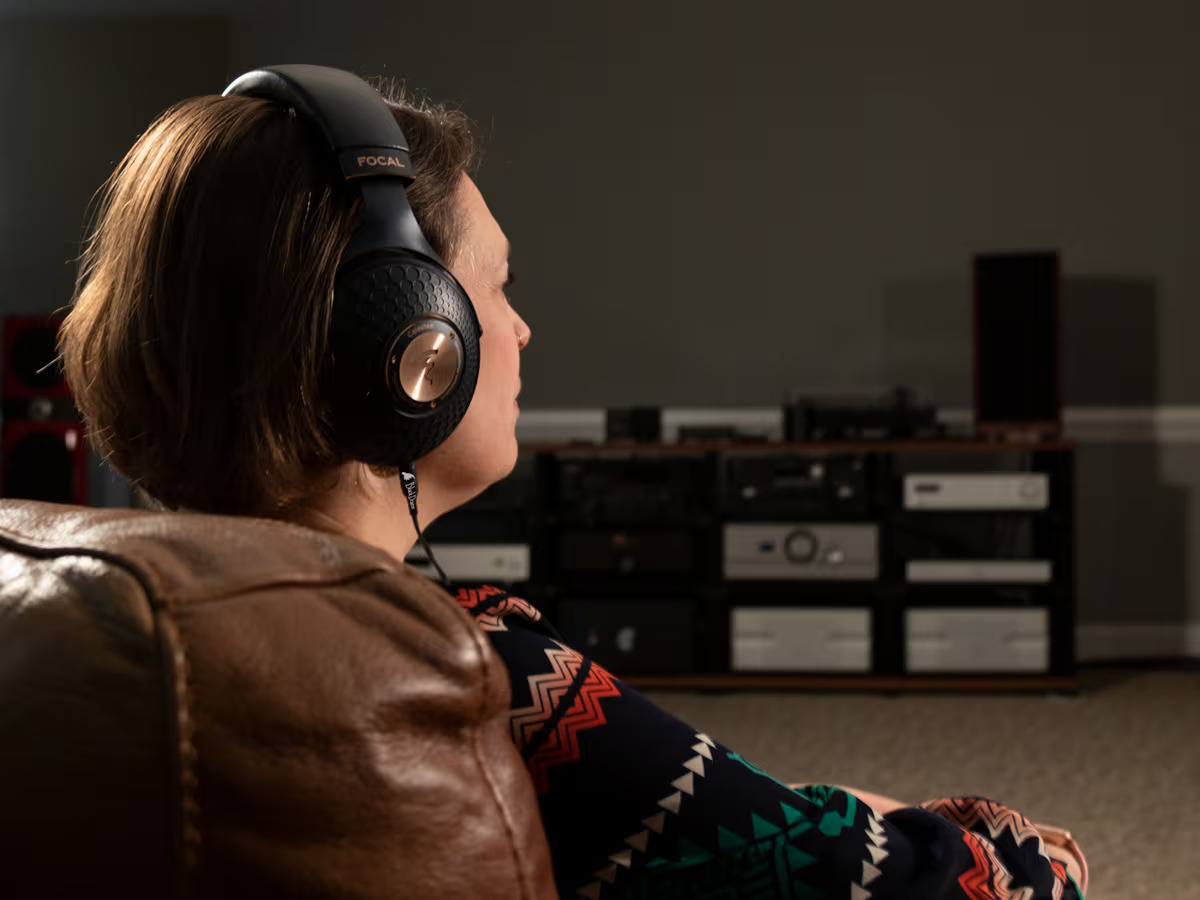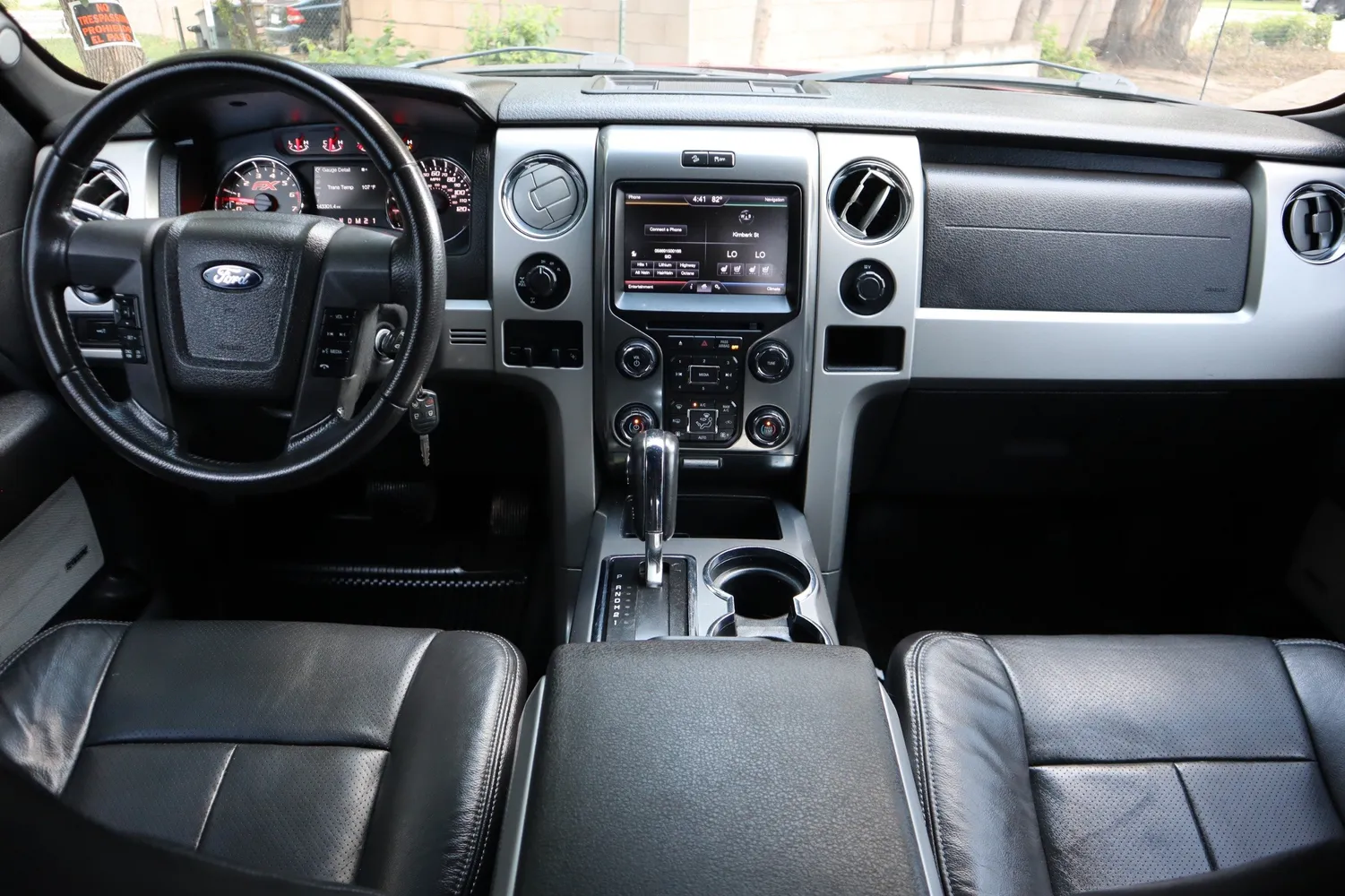Home>Production & Technology>Audiophile>How To Increase Height In An Audiophile System


Audiophile
How To Increase Height In An Audiophile System
Modified: February 17, 2024
Discover effective methods to increase height in your audiophile system. Learn how to optimize your audio setup for the ultimate listening experience.
(Many of the links in this article redirect to a specific reviewed product. Your purchase of these products through affiliate links helps to generate commission for AudioLover.com, at no extra cost. Learn more)
Table of Contents
- Introduction
- Understanding Audiophile Systems
- Importance of Height in an Audiophile System
- Steps to Increase Height in an Audiophile System
- Speaker Placement
- Using Dedicated Height Speakers
- Adjusting Speaker Angles
- Optimizing Speaker Positioning for Height
- Utilizing Room Acoustics
- Upgrading Amplifiers and Receivers
- Fine-Tuning with EQ and Calibration
- Conclusion
Introduction
Welcome to the world of audiophiles, where sound quality is paramount, and music is experienced at its finest. Audiophile systems are designed to reproduce audio with unparalleled fidelity, capturing every nuance and detail of the original recording. From the warmth of vinyl records to the precision of high-resolution digital formats, audiophiles strive for the ultimate sonic experience.
One crucial aspect of creating an immersive and lifelike audio setup is the concept of height. Height positioning adds a new dimension to the soundstage, creating a three-dimensional sonic landscape that envelops the listener. It allows for a more natural and spatially accurate representation of sound, simulating a live concert or a movie theater experience.
However, achieving optimal height in an audiophile system can be a challenging task. It requires careful consideration of speaker placement, room acoustics, and strategic upgrades. In this article, we will delve into the various factors that influence height in an audiophile system and explore practical steps to enhance its presence.
So whether you are a seasoned audiophile looking to take your system to the next level, or a newcomer eager to create a captivating audio experience, read on to discover how to increase the height in your audiophile system.
Understanding Audiophile Systems
Before delving into height optimization, it is essential to have a basic understanding of audiophile systems. At its core, an audiophile system comprises high-quality audio components that work together to reproduce sound with unparalleled accuracy and transparency.
The primary components of an audiophile system include a source device, such as a turntable or digital media player, an amplifier to boost the signal, and a pair of speakers to convert the electrical signals into sound waves. Additional elements may include a preamplifier, a digital-to-analog converter (DAC), and various cables and connectors.
What sets an audiophile system apart from a regular audio setup is the emphasis on high-quality components and meticulous attention to sonic detail. Audiophiles often invest in equipment that boasts superior build quality, refined circuitry, and advanced features designed to minimize distortion and reproduce sound as faithfully as possible.
Another notable characteristic of audiophile systems is the pursuit of a balanced sound signature. Audiophiles strive for accuracy, seeking a system that reproduces music without coloring or distorting the original recording. This involves careful speaker selection, amplifier matching, and room correction techniques to ensure a neutral and transparent sound reproduction.
Furthermore, audiophile systems often incorporate the use of high-resolution audio formats such as FLAC or DSD, which offer greater detail and depth compared to standard compressed audio formats like MP3. These uncompressed formats preserve the nuances and subtleties of the music, allowing for a more immersive and captivating listening experience.
Now that we have a basic understanding of audiophile systems, let’s explore why height is an essential aspect of creating a truly immersive audio setup.
Importance of Height in an Audiophile System
When it comes to recreating a lifelike audio experience, height is a crucial element that adds depth and dimension to the soundstage. In a well-designed audiophile system, height speakers or elevation channels are strategically positioned to create a vertical dimension in addition to the traditional left and right channels.
The addition of height channels allows for a more immersive and enveloping sound experience. It creates a sense of vertical space, making it feel as if the music or sound effects are coming from above, simulating a live concert or a movie theater environment. This height information enhances the illusion of sound coming from different directions, making the audio presentation more realistic.
Height channels are particularly important in formats like Dolby Atmos and DTS:X, which utilize object-based audio technology. With these formats, audio engineers can precisely position sounds in a three-dimensional space, including overhead information. By integrating height speakers into your audiophile system, you can fully enjoy the intended audio experience as intended by the artists and sound engineers.
Moreover, height speakers play a crucial role in creating a cohesive soundstage. By accurately placing sound elements in a three-dimensional space, height channels blend seamlessly with the traditional stereo or surround speakers. This integration allows for a smoother transition between channels and a more accurate recreation of the recording environment.
To maximize the benefits of height channels, it is important to prioritize speaker placement, room acoustics, and system optimization. By paying careful attention to these factors, you can unlock the full potential of your audiophile system and achieve a more immersive and lifelike audio experience.
Now that we understand the importance of height in an audiophile system, let’s explore the steps to increase height and optimize your setup for a truly captivating audio experience.
Steps to Increase Height in an Audiophile System
Increasing the height in your audiophile system requires careful consideration of various factors, including speaker placement, equipment upgrades, and room acoustics. By following these steps, you can optimize your system for a more immersive and captivating audio experience:
- Speaker Placement: Proper speaker placement is crucial for achieving optimal height. Experiment with different positioning options to find the sweet spot that maximizes the vertical soundstage. Consider using a speaker guide or performing measurements to ensure accurate placement.
- Using Dedicated Height Speakers: Investing in dedicated height speakers can significantly improve the vertical performance of your system. These speakers are specifically designed to reproduce height information, adding a new dimension to the soundstage. Ensure that your receiver or amplifier supports height channels for seamless integration.
- Adjusting Speaker Angles: Tweaking the angle of your speakers can impact the perception of height. Experiment with tilting or angling the speakers slightly upwards to direct sound towards the listening position, enhancing the illusion of overhead audio.
- Optimizing Speaker Positioning for Height: In addition to the angle, the height of the speakers themselves can affect the perceived height in the system. Consider raising the height speakers closer to the ceiling or using stands to position them at ear level when seated, allowing for a more accurate reproduction of height information.
- Utilizing Room Acoustics: The acoustics of your listening room can greatly influence the height performance. Use acoustic treatments such as diffusers, absorbers, and bass traps to minimize reflections and create a more controlled listening environment. This helps in preserving the accuracy and separation of height information.
- Upgrading Amplifiers and Receivers: A higher quality amplifier or receiver with advanced processing capabilities can improve the reproduction of height channels. Look for models that support the latest audio formats and feature dedicated height channel amplification for enhanced performance.
- Fine-Tuning with EQ and Calibration: Use room correction software or manual equalization to fine-tune the frequency response of your speakers, ensuring a balanced sound reproduction. Calibration systems like Audyssey or Dirac can automatically optimize the audio performance based on your room’s characteristics.
By following these steps and considering the unique characteristics of your setup, you can effectively increase the height in your audiophile system and create a more immersive and engaging audio experience.
Speaker Placement
Proper speaker placement is crucial for achieving optimal height in your audiophile system. The positioning of your speakers can significantly impact the perceived vertical soundstage and the overall immersive experience. Here are some guidelines to consider:
- Experiment with Different Positions: Start by experimenting with different speaker positions to find the ideal placement for height. Start with the speakers positioned at ear level, slightly above the listener’s head, or even closer to the ceiling. It’s important to find the right balance between a natural height effect and avoiding excessive vertical localization.
- Consider the Distance from the Listening Position: The distance between the height speakers and the listening position will affect the intensity and localization of the height cues. Experiment with different distances to find the sweet spot that offers the best vertical soundstage and overall balance.
- Use Speaker Placement Guides: Speaker placement guides, such as Dolby’s speaker setup guidelines, can provide valuable information on speaker distances and angles for optimal height performance. Following these guides can help ensure accurate placement and enhance the height effects in your system.
- Use Speaker Measurement Tools: Consider using measurement tools like a sound level meter or calibration microphone to analyze the sound reproduction of your speakers. These tools can help you identify any issues with speaker placement or room acoustics that might be affecting the height performance.
- Avoid Obstructions: Ensure that there are no physical obstructions, such as furniture or curtains, blocking the path between the height speakers and the listening position. These obstructions can interfere with the vertical soundstage and negatively impact the height effects. Clearing the path will ensure unobstructed sound propagation.
- Take Room Acoustics into Account: Room acoustics play a significant role in the reproduction of height information. Consider using acoustic treatments, such as diffusers or absorbers, to minimize reflections and create a more controlled listening environment. This will enhance the accuracy and separation of the height cues in your audiophile system.
Remember that speaker placement is a subjective process that can vary based on personal preferences, room characteristics, and the specific equipment you are using. Take the time to experiment and fine-tune the position of your speakers to achieve the optimal height effects and create a truly immersive audio experience.
Using Dedicated Height Speakers
When aiming to increase height in your audiophile system, utilizing dedicated height speakers can make a significant difference. These speakers are specifically designed to reproduce height information, adding a new dimension to the soundstage and enhancing the overall immersive experience. Here are some important points to consider when incorporating dedicated height speakers:
- Elevation Channels: Dedicated height speakers are often referred to as elevation channels in home theater setups. They are designed to reproduce sound from above the listener, creating a convincing sense of height and spaciousness in the audio presentation.
- Multichannel Audio Formats: Dedicated height speakers are particularly effective when used with multichannel audio formats like Dolby Atmos and DTS:X. These formats utilize object-based audio technology to precisely position sounds in a three-dimensional space, including overhead information. By incorporating dedicated height speakers, you can enjoy a more immersive and realistic sound experience.
- Compatibility: Ensure that your receiver or amplifier supports height channels and can power the additional speakers. Some systems may require a specific configuration or equipment upgrade to enable the use of dedicated height speakers.
- Positioning: Consider the optimal placement for your dedicated height speakers. Follow speaker placement guidelines provided by the manufacturer or industry standards to achieve accurate height effects. Experiment with angles and positions to find the configuration that provides the most convincing and immersive soundstage.
- Matching with Main Speakers: It is important to consider the compatibility and tonal matching between your dedicated height speakers and the main speakers in your system. Aim for a cohesive and seamless integration of all channels to ensure a balanced and accurate sound reproduction. Matching the brand and series with your main speakers can help achieve a harmonious sonic presentation.
- Amplification: Depending on your setup, dedicated height speakers may require additional amplification. Ensure that your receiver or amplifier has the necessary channels and power to drive these speakers effectively. Consider upgrading your amplifier if it falls short in terms of power or features required for dedicated height speakers.
By incorporating dedicated height speakers into your audiophile system, you can elevate the immersive experience to new heights, allowing for a more realistic and captivating soundstage. It is essential to ensure compatibility, proper positioning, and tonal matching to fully enjoy the benefits of dedicated height speakers in your setup.
Adjusting Speaker Angles
When aiming to increase height in your audiophile system, adjusting the angles of your speakers can play a significant role in enhancing the perception of height. By tweaking the angle at which the speakers project sound, you can direct the audio towards the listening position in a way that simulates overhead sound. Here are some important considerations when adjusting speaker angles:
- Tilt Upwards: Experiment with tilting your speakers slightly upwards to direct the sound towards the listener’s ears. This can create the impression of sound coming from above and enhance the perception of height in your system.
- Listened-Driven Angles: Consider adjusting the angles of your speakers based on the listener’s position. Speakers angled towards the primary listening position can improve the accuracy and immersion of the height effects. However, be mindful not to overdo the angle, as it may result in an unnatural and distracting soundstage.
- Adjustable Mounts or Stands: If your speakers are mounted on adjustable stands or brackets, take advantage of this flexibility to fine-tune the angle. Experiment with different angles and listen to the changes in the soundstage. Make incremental adjustments until you achieve the desired height effects.
- Consider Reflections: Keep in mind the potential impact of reflections when adjusting speaker angles. The angle at which sound waves hit walls, ceilings, and other surfaces can affect their propagation and alter the perception of height. Minimizing reflections through the use of acoustic treatments or positioning the speakers away from reflective surfaces can help preserve the integrity of the height effects.
- Balance with Other Channels: When adjusting speaker angles, consider balancing the height channels with the other channels in your audiophile system. Aim for a cohesive and seamless integration of sound across all channels, ensuring a balanced and immersive audio experience.
Remember that adjusting speaker angles is a subjective process that may vary depending on personal preferences and room characteristics. Take the time to experiment with different angles and listen to the changes in the height effects. Fine-tune the adjustments until you achieve the desired sense of overhead sound and height in your audiophile system.
Optimizing Speaker Positioning for Height
Optimizing the positioning of your speakers is essential for achieving optimal height in your audiophile system. Proper placement ensures accurate and immersive height effects, enhancing the overall audio experience. Here are some key considerations when positioning your speakers for height:
- Elevation: Consider raising your height speakers closer to the ceiling or using stands to position them at ear level when seated. This helps create a more accurate reproduction of height information and ensures that the sound is perceived as coming from above.
- Relative Height: Pay attention to the relative positioning of your main speakers and height speakers. The height speakers should be positioned higher or above the main speakers to effectively recreate vertical sound cues. This placement reinforces the perception of height and adds depth to the soundstage.
- Listening Position: Position your speakers relative to the primary listening position. Aim to create an equidistant triangle between the listener and the main and height speakers. This ensures balanced and accurate sound localization, enhancing the height effects and overall imaging.
- Symmetry: Strive for symmetry in your speaker positioning. Ensuring that the left and right height speakers are equidistant from the listener and appropriately positioned can contribute to a more balanced and cohesive soundstage. This symmetry aids in accurately reproducing height cues and enhances the overall audio experience.
- Experimentation: Don’t be afraid to experiment with speaker positioning. Small adjustments in positioning, even a few inches in any direction, can significantly impact the height effects in your system. Take the time to listen and fine-tune the positions until you find the sweet spot that delivers the desired height experience.
Remember to consider the unique characteristics of your room, such as its size and shape, when positioning your speakers for height. Each room will have its own acoustic properties that may influence speaker placement, so it’s important to adapt the positioning based on your specific listening environment.
Take the time to carefully position and optimize your speakers for height, considering the elevation, relative positioning, listening position, symmetry, and room characteristics. By doing so, you can maximize the height effects in your audiophile system and create a more immersive and lifelike audio experience.
Utilizing Room Acoustics
When striving to increase height in your audiophile system, it’s important to consider the role of room acoustics. The acoustic characteristics of your listening environment can significantly impact the perception and accuracy of height effects. By utilizing room acoustics effectively, you can enhance the overall immersive experience. Here are some key considerations:
- Reflections: Minimize reflections in your room to maintain the integrity of the height effects. Excessive reflections can blur the spatial cues and compromise the accuracy of sound localization. Consider using diffusers, absorbers, or bass traps strategically placed to control the reflections and create a more controlled listening environment.
- Speaker-Listener Interaction: Understand how the placement of your speakers and your listening position interact with the room’s acoustic characteristics. Small adjustments in speaker positioning or listening position may help mitigate any room-related issues and optimize the height effects. Experiment with placement and seating arrangements to find the best compromise between room acoustics and height performance.
- Bass Management: Proper management of low-frequency energy and bass response is crucial for room acoustics. Use room correction tools, such as bass traps or equalizers, to address any standing waves or bass accumulation that may affect the overall balance of the height effects. Maintaining a controlled and even bass response contributes to a more accurate and immersive soundstage.
- Absorption and Diffusion: Strike a balance between absorption and diffusion in your listening environment. Absorption materials help reduce unwanted reflections, while diffusion materials disperse sound energy more evenly. Proper placement of these materials can create a more balanced and spacious soundstage, enhancing the perception of height.
- Room Layout: Consider the overall layout of your room and how it may impact the height effects. Avoid overcrowding the space with furniture or other objects that can create obstructions or cause reflections. Optimize the room layout to provide an optimal listening environment and maximize the immersion of the height effects.
- Professional Acoustic Treatment: For a comprehensive approach to room acoustics, consider consulting with a professional acoustician. They can assess your room’s specific characteristics and provide tailored recommendations for improving the height effects and overall audio performance of your system.
By effectively utilizing room acoustics, you can create an environment that enhances the height effects, improves sound localization, and delivers a more immersive listening experience in your audiophile system.
Upgrading Amplifiers and Receivers
Upgrading your amplifiers and receivers can significantly enhance the height performance in your audiophile system. The amplification and processing capabilities of your equipment play a crucial role in reproducing the height effects accurately and faithfully. Here are some important considerations when upgrading your amplifiers and receivers:
- Support for Height Channels: Ensure that the amplifier or receiver you choose supports height channels. Not all models are designed to accommodate dedicated height speakers or elevation channels. Look for specifications or features that explicitly mention support for height channels to ensure seamless integration into your system.
- Dedicated Height Channel Amplification: Consider amplifiers or receivers that offer dedicated amplification for height channels. This provides dedicated power to the height speakers, allowing for better control and accuracy in reproducing height effects. Dedicated amplification can result in clearer and more defined height cues.
- Power and Headroom: Assess the power output and headroom capabilities of your amplifiers and receivers. Adequate power is essential for reproducing the dynamic range and intricacies of height effects. Upgrading to an amplifier or receiver with higher power ratings can lead to improved clarity, richness, and depth in the height reproduction.
- Processing Features: Look for amplifiers and receivers that offer advanced processing features designed to optimize height effects. Features like Dolby Atmos and DTS:X processing can decode and render height information more accurately. Additionally, consider features like room correction and EQ capabilities to fine-tune the height channel performance to suit your listening environment.
- Compatibility: Ensure that the upgraded amplifier or receiver is compatible with your existing audio components, such as speakers and source devices. Consider the connectivity options available and ensure compatibility with the audio formats and technologies utilized in your system.
- Reviews and Recommendations: Research and read reviews to gain insights into the quality and performance of different amplifiers and receivers. Pay attention to user experiences with height reproduction and overall sound quality. Seek recommendations from trusted sources, audiophile forums, or knowledgeable experts to help guide your decision-making process.
Upgrading your amplifiers and receivers to models that offer better support, power, and processing capabilities can have a significant impact on the height reproduction in your audiophile system. It allows for more accurate and immersive soundstage, bringing your music and movies to new heights.
Fine-Tuning with EQ and Calibration
Fine-tuning your audiophile system with EQ (equalization) and calibration is an essential step to optimize the height effects and overall performance. These tools allow you to adjust the frequency response, timing, and other parameters of your system to achieve a more balanced and accurate sound reproduction. Here’s how you can utilize EQ and calibration to enhance the height in your system:
- Room Correction Systems: Consider using room correction systems like Audyssey, Dirac, or Trinnov. These systems utilize advanced algorithms to measure and analyze the acoustics of your listening room. They then adjust the speaker output to compensate for any acoustic anomalies, resulting in a more accurate and immersive audio experience, including height effects.
- Manual EQ: If you prefer a more hands-on approach, manual equalization can help fine-tune the frequency response of your speakers. Use a parametric equalizer or graphic equalizer to target specific frequencies that may need adjustment. Take measurements using a calibration microphone to identify any frequency peaks or dips and make precise EQ adjustments to achieve a balanced sound reproduction.
- Speaker Distance and Level Calibration: Utilize the calibration features of your receiver or amplifier to ensure accurate speaker distance and level settings. This calibration process takes into account the physical placement of your speakers and adjusts the delay and volume levels to align the sound from different channels, including the height speakers. This helps create a cohesive and seamless soundstage, enhancing the height effects.
- Height Speaker Level Adjustment: Pay particular attention to the level adjustment of your height speakers. Use the calibration or speaker level settings in your receiver or amplifier to match the volume level of the height speakers with the other channels. This helps achieve a balanced and smooth transition between the height and other speakers, creating a more cohesive and immersive height experience.
- Measurements and A-B Testing: Use measurement tools like a sound level meter or audio analysis software to validate the effectiveness of your EQ and calibration adjustments. Take measurements at different locations in your listening area to ensure consistent and accurate height reproduction. Perform A-B testing to compare the results of different EQ settings and calibration configurations until you achieve the desired height effects.
- Regular Reassessment: Keep in mind that room acoustics can change over time due to factors like furniture rearrangement or additions to the listening space. Periodically revisit the EQ and calibration settings of your system to ensure optimal height performance. Make adjustments as needed to maintain a balanced and immersive soundstage.
By fine-tuning your audiophile system with EQ and calibration, you can optimize the height effects and achieve a more accurate and immersive sound reproduction. Whether utilizing room correction systems or manually adjusting the EQ settings, these tools allow you to tailor the sound to your specific room and preferences, enhancing the overall height experience in your system.
Conclusion
Enhancing the height in your audiophile system is a journey that involves careful consideration of speaker placement, equipment upgrades, and room acoustics. By paying attention to these factors, you can create a more immersive and captivating audio experience that truly elevates your enjoyment of music and movies. Here’s a recap of the steps we’ve explored:
- Begin by optimizing speaker placement, experimenting with different positions to find the sweet spot that maximizes the vertical soundstage.
- Incorporate dedicated height speakers or elevation channels to specifically reproduce height information, enhancing the three-dimensional nature of the soundstage.
- Adjust the angle of your speakers, tilting them slightly upwards to direct sound towards the listening position and simulate overhead sound.
- Optimize the positioning of your speakers, considering the elevation, relative height, listening position, symmetry, and room characteristics to achieve a balanced and accurate height reproduction.
- Utilize room acoustics, such as diffusers, absorbers, and bass traps, to minimize reflections and create a controlled listening environment that enhances the height effects.
- Consider upgrading your amplifiers and receivers to models that support height channels, provide dedicated amplification, and offer advanced processing features for optimal height reproduction.
- Fine-tune your system with EQ and calibration, using room correction systems or manual adjustments to optimize the frequency response, timing, and other parameters for a balanced and accurate height performance.
Remember, achieving optimal height in your audiophile system requires patience, experimentation, and a commitment to continuously reassess and fine-tune your setup. Each step contributes to creating a more immersive and lifelike audio experience, elevating the way you enjoy music and movies.
So, take the time to optimize your speakers, embrace the possibilities of dedicated height speakers, fine-tune with EQ and calibration, and optimize your room’s acoustics. With these steps, you can unlock the full potential of your audiophile system and immerse yourself in a world of breathtaking sound.

